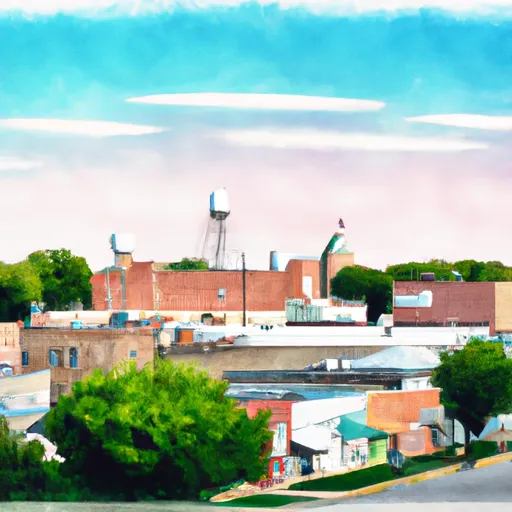-
 Snoflo Premium
Snoflo Premium
Get unlimited access to all our content
With no Ad interruptions! - Start Your Free Trial Login with existing account
Haysville
Eden Index
Climate
8.1
•
Recreation
3.7
•
Community
3.5
•
Safeguard
5.4/10

Haysville, Indiana is a small town in Dubois County, located in the southern part of the state. The town has a humid continental climate with four distinct seasons, characterized by hot summers and cold winters. The area is rich in hydrology constituents, with numerous streams, rivers, and lakes, such as Patoka Lake and the Patoka River. Outdoor recreation is popular in Haysville, with opportunities for fishing, boating, hiking, and camping. The nearby Hoosier National Forest provides over 200,000 acres of public land for outdoor enthusiasts to explore. Additionally, the town operates a park with a playground and picnic areas. Overall, Haysville's climate and natural resources provide ample opportunities for outdoor recreation.
What is the Eden Index?
The Snoflo Eden Index serves as a comprehensive rating system for regions, evaluating their desirability through a holistic assessment of climate health, outdoor recreation opportunities, and natural disaster risk, acknowledging the profound impact of these factors on livability and well-being.
Climate Health Indicator (CHI): 8.1
Haysville receives approximately
1202mm of rain per year,
with humidity levels near 85%
and air temperatures averaging around
13°C.
Haysville has a plant hardyness factor of
6, meaning
plants and agriculture in this region thrive during a short period during spring and early summer. Most
plants will die off during the colder winter months.
By considering the ideal temperature range, reliable water supplies, clean air, and stable seasonal rain or snowpacks, the Climate Health Indicator (CHI) underscores the significance of a healthy climate as the foundation for quality living.
A healthy climate is paramount for ensuring a high quality of life and livability in a region, fostering both physical well-being and environmental harmony. This can be characterized by ideal temperatures, reliable access to water supplies, clean air, and consistent seasonal rain or snowpacks.
Weather Forecast
Streamflow Conditions
Patoka-White
Area Rivers
Patoka-White
Snowpack Depths
Patoka-White
Reservoir Storage Capacity
Patoka-White
Groundwater Levels
Recreational Opportunity Index (ROI): 3.7
The Recreational Opportunity Index (ROI) recognizes the value of outdoor recreational options, such as parks, hiking trails, camping sites, and fishing spots, while acknowledging that climate plays a pivotal role in ensuring the comfort and consistency of these experiences.
Access to outdoor recreational opportunities, encompassing activities such as parks, hiking, camping, and fishing, is crucial for overall well-being, and the climate plays a pivotal role in enabling and enhancing these experiences, ensuring that individuals can engage in nature-based activities comfortably and consistently.
Camping Areas
| Campground | Campsites | Reservations | Toilets | Showers | Elevation |
|---|---|---|---|---|---|
| West Boggs Park | 220 | 528 ft | |||
| Point Mallard City Campground | None | 568 ft | |||
| Harpeth River Bridge | None | 393 ft | |||
| Sunset City Park | None | 548 ft | |||
| Glendale State Fish and Wildlife Area | 120 | 495 ft | |||
| Lincoln State Park | 270 | 467 ft | |||
| Montgomery Rec Park | None | 515 ft | |||
| Dubois County Park | 32 | 575 ft | |||
| Crane MWR Military | None | 594 ft | |||
| Ferdinand State Forest | 70 | 489 ft |
Nearby Ski Areas
Catastrophe Safeguard Index (CSI):
The Catastrophe Safeguard Index (CSI) recognizes that natural disaster risk, encompassing floods, fires, hurricanes, and tornadoes, can drastically affect safety and the overall appeal of an area.
The level of natural disaster risk in a region significantly affects safety and the overall livability, with climate change amplifying these risks by potentially increasing the frequency and intensity of events like floods, fires, hurricanes, and tornadoes, thereby posing substantial challenges to community resilience and well-being.
Community Resilience Indicator (CRI): 3.5
The Community Resilience Indicator (CRI) recognizes that education, healthcare, and socioeconomics are crucial to the well-being of a region. The CRI acknowledges the profound impact of these elements on residents' overall quality of life. By evaluating educational resources, healthcare accessibility, and economic inclusivity, the index captures the essential aspects that contribute to a thriving community, fostering resident satisfaction, equity, and social cohesion.

